|
|
|
|
A new algorithm for bidirectional deconvolution |
The first data example is the simplest mixed-phase wavelet, which only has three points [3,7,2]. We use it to verify the ability of our method to deal with the mixed-phase wavelet. The input data and its bidirectional result are shown in Figures 1 and 2. In this case, our new method is able to compress the simple mixed phase wavelet into a spike.
|
data1
Figure 1. The three data points [3,7,2]. |

|
|---|---|
|
|
|
mod1
Figure 2. The result of our deconvolution method. |
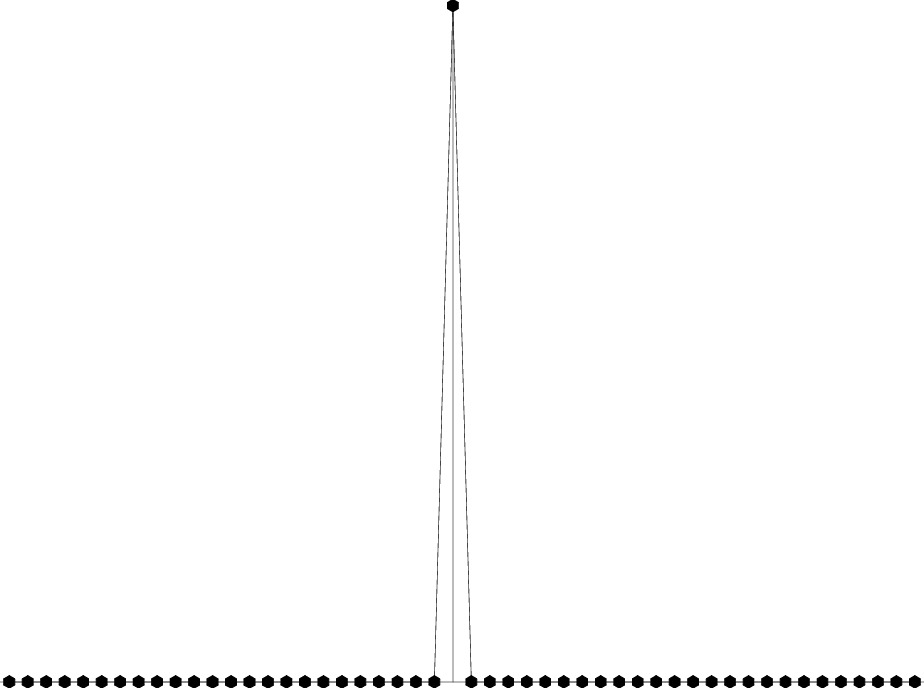
|
|---|---|
|
|
To illustrate the capabilities and limitations of our new method, we analyze the results obtained by inverting the zero-phase wavelet. This wavelet is created by convolving the minimum-phase with its own time-reversed wavelet.
Figures 3(a) and 3(b) show the
filters estimated by our method. Figures 3(c) and 3(d) show the filters inverted by the previous method of
bidirectional deconvolution. Here we time-reverse the anti-causal filter ![]() into
a causal filter
into
a causal filter ![]() for easier comparison. Ideally, filter
for easier comparison. Ideally, filter ![]() and filter
and filter ![]() should be identical, because the zero-phase wavelet is symmetric, with its minimum-phase part the same as its maximum-phase part, but time-reversed. The
results of our method perfectly satisfy the theory, which shows the
extreme similarity between filter
should be identical, because the zero-phase wavelet is symmetric, with its minimum-phase part the same as its maximum-phase part, but time-reversed. The
results of our method perfectly satisfy the theory, which shows the
extreme similarity between filter ![]() and filter
and filter ![]() . When we invert the filters, the update direction is the same for both filters, because the searching
gradients are equal. However, using the method from Zhang and Claerbout (2010) yields a filter
. When we invert the filters, the update direction is the same for both filters, because the searching
gradients are equal. However, using the method from Zhang and Claerbout (2010) yields a filter ![]() that is quite different from filter
that is quite different from filter ![]() , because they are inverted separately.
, because they are inverted separately.
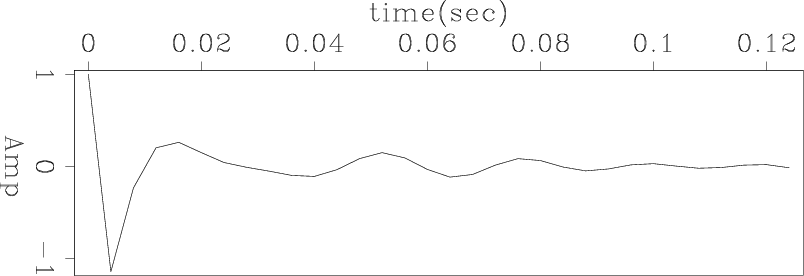
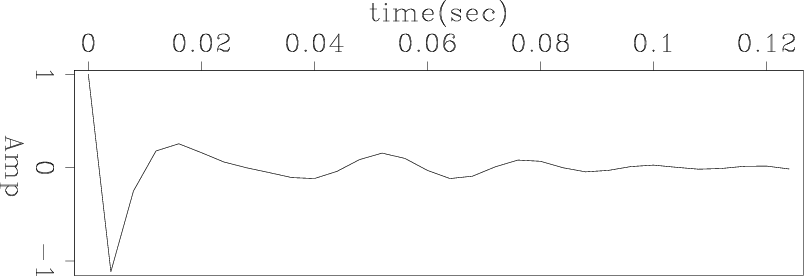
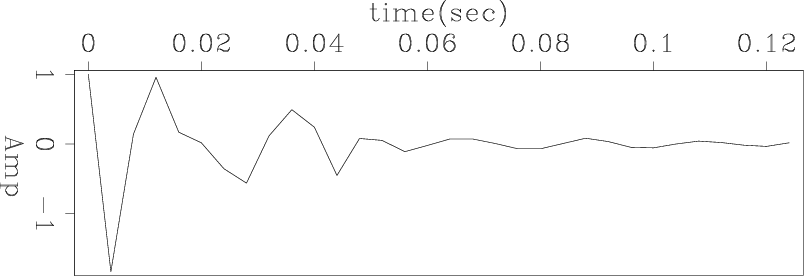
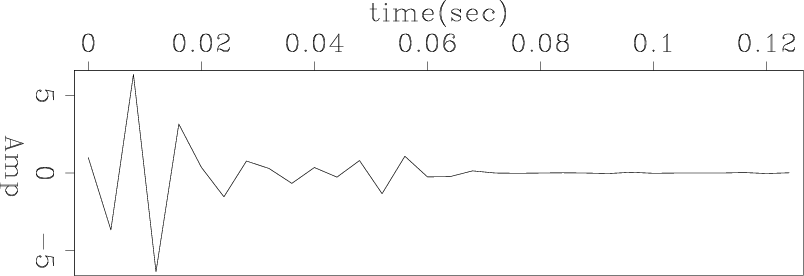
|
|---|
|
filt2anew,filt2bnew,filt2aold,filt2bold
Figure 3. For zero-phase wavelet inversion, (a) filter |
|
|
Figures 4, 5
and 6 show the zero-phase wavelet and its
bidirectional deconvolution, using our new algorithm and the method of Zhang and Claerbout (2010). The results show that the wavelet is almost compressed into
a spike by our method, but it is not as spiky as the result of the previous method. One possible
reason may be the nature of the non-linear problem. There may be
multiple minima in this problem, and due to our additional condition
that filter ![]() and filter
and filter ![]() should be the same in this case, we
find a different minimum, which leads to a different result.
should be the same in this case, we
find a different minimum, which leads to a different result.
Thus a good starting guess may help us to get a better result. Or perhaps the preconditioning can also make the solution fast converge to the global minima by utilizing prior information.
|
data2
Figure 4. Zero-phase wavelet. |

|
|---|---|
|
|
|
mod2new
Figure 5. Deconvolution result by our method. |
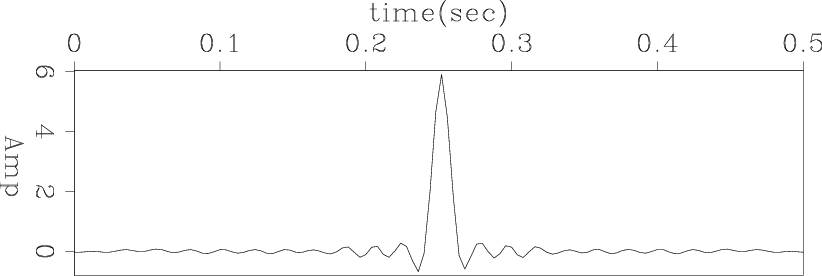
|
|---|---|
|
|
|
mod2old
Figure 6. Deconvolution result by the previous method. |
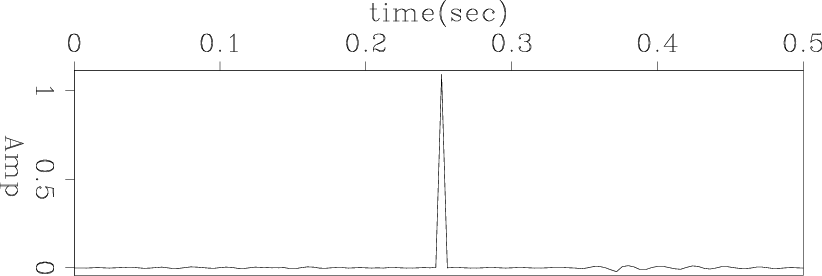
|
|---|---|
|
|
Figures 7 and 8 show the wavelet estimated by our method and the previous method. We notice that both of the wavelets approximate the input zero-phase wavelet, which is shown in Figure 4. However our estimated wavelet looks more symmetric and cleaner with less side lopes than the one estimated by the previous method. The reason is that our estimated filters are identical, which make the causal part and anti-causal part of the inverted wavelet the same.
|
wavelet2new
Figure 7. Shot wavelet estimated by our method |
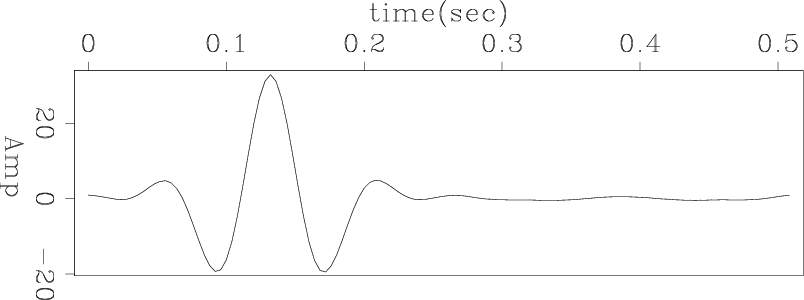
|
|---|---|
|
|
|
wavelet2old
Figure 8. Shot wavelet estimated by the previous method |
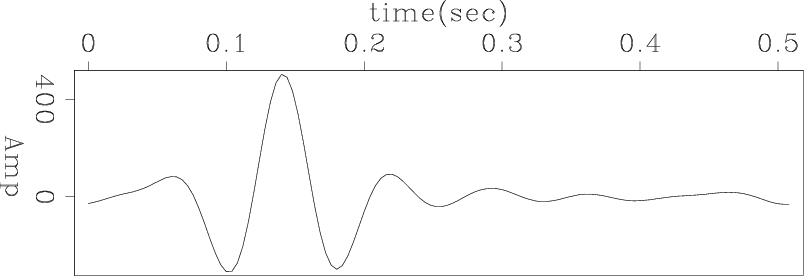
|
|---|---|
|
|
|
|
|
|
A new algorithm for bidirectional deconvolution |